Below you will find a list of Forex Brokers accepting US clients. Due to the strict and complicated regulatory environment, it became quite a challenge for FX brokers to operate in the United States. To make it worse, due to the Dodd-Frank Act and the Memorandum of Understanding, many intertational forex brokers all over the world stopped accepting traders from the USA. Still, there are some distant offshore countries where local authorities haven't yet imposed the restrictions. Unfortunately, most easy-going offshore brokers are not overseen or regulated, although that's exactly the reason why there's this opportunity to open a trading account with them. Notable benefits of going offshore are: no hedging prohibition, no FIFO rule application, and really high trading leverage.

 PlexyTrade (2024)
Leverage: up to 1:2000
Deposit: from 50 USD
Spreads:
PlexyTrade (2024)
Leverage: up to 1:2000
Deposit: from 50 USD
Spreads: 





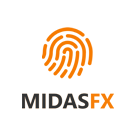 MidasFX (2023)
Leverage: up to 1:1000
Deposit: from 1 USD
Spreads:
MidasFX (2023)
Leverage: up to 1:1000
Deposit: from 1 USD
Spreads: 





 ZForex (2022)
Leverage: up to 1:1000
Deposit: from 10 USD
Spreads:
ZForex (2022)
Leverage: up to 1:1000
Deposit: from 10 USD
Spreads: 







 DefcoFX (2024)
Leverage: up to 1:2000
Deposit: from 50 USD
Spreads:
DefcoFX (2024)
Leverage: up to 1:2000
Deposit: from 50 USD
Spreads: 



 ScoreCM (2024)
Leverage: up to 1:1000
Deposit: from 10 USD
Spreads:
ScoreCM (2024)
Leverage: up to 1:1000
Deposit: from 10 USD
Spreads: 





 Market101 (2022)
Leverage: up to 1:1000
Deposit: from 50 USD
Spreads:
Market101 (2022)
Leverage: up to 1:1000
Deposit: from 50 USD
Spreads: 



 TradeSmart (2024)
Leverage: up to 1:2000
Deposit: from 50 USD
Spreads:
TradeSmart (2024)
Leverage: up to 1:2000
Deposit: from 50 USD
Spreads: 





 Grand Capital (2006)
Leverage: up to 1:1000
Deposit: from 10 USD
Spreads:
Grand Capital (2006)
Leverage: up to 1:1000
Deposit: from 10 USD
Spreads: 















 Hankotrade (2018)
Leverage: up to 1:500
Deposit: from 10 USD
Spreads:
Hankotrade (2018)
Leverage: up to 1:500
Deposit: from 10 USD
Spreads: 




 Capitalcore (2019)
Leverage: up to 1:2000
Deposit: from 10 USD
Spreads:
Capitalcore (2019)
Leverage: up to 1:2000
Deposit: from 10 USD
Spreads: 




 Fyntura (2023)
Leverage: up to 1:500
Deposit: from 10 USD
Spreads:
Fyntura (2023)
Leverage: up to 1:500
Deposit: from 10 USD
Spreads: 





 Lotas Capital (2017)
Leverage: up to 1:500
Deposit: from 100 USD
Spreads:
Lotas Capital (2017)
Leverage: up to 1:500
Deposit: from 100 USD
Spreads: 




 DuraMarkets (2024)
Leverage: up to 1:1000
Deposit: from 10 USD
Spreads:
DuraMarkets (2024)
Leverage: up to 1:1000
Deposit: from 10 USD
Spreads: 



 Xtream Markets (2015)
Leverage: up to 1:1000
Deposit: from 5 USD
Spreads:
Xtream Markets (2015)
Leverage: up to 1:1000
Deposit: from 5 USD
Spreads: 










 HeroFX (2022)
Leverage: up to 1:500
Deposit: from 5 USD
Spreads:
HeroFX (2022)
Leverage: up to 1:500
Deposit: from 5 USD
Spreads: 





 UnitedPips (2024)
Leverage: up to 1:1000
Deposit: from 10 USD
Spreads:
UnitedPips (2024)
Leverage: up to 1:1000
Deposit: from 10 USD
Spreads: 






 SageFX (2020)
Leverage: up to 1:500
Deposit: from 10 USD
Spreads:
SageFX (2020)
Leverage: up to 1:500
Deposit: from 10 USD
Spreads: 






 Nash Markets (2020)
Leverage: up to 1:500
Deposit: from 10 USD
Spreads:
Nash Markets (2020)
Leverage: up to 1:500
Deposit: from 10 USD
Spreads: 





 AZAforex (2016)
Leverage: up to 1:1000
Deposit: from 1 USD
Spreads:
AZAforex (2016)
Leverage: up to 1:1000
Deposit: from 1 USD
Spreads: 














 Tradiso (2021)
Leverage: up to 1:100
Deposit: from 100 USD
Spreads:
Tradiso (2021)
Leverage: up to 1:100
Deposit: from 100 USD
Spreads: 






 AAFX (2015)
Leverage: up to 1:2000
Deposit: from 100 USD
Spreads:
AAFX (2015)
Leverage: up to 1:2000
Deposit: from 100 USD
Spreads: 







 No1 Capital Markets (2017)
Leverage: up to 1:1000
Deposit: from 5 USD
Spreads:
No1 Capital Markets (2017)
Leverage: up to 1:1000
Deposit: from 5 USD
Spreads: 










 Solid ECN (2021)
Leverage: up to 1:1000
Deposit: from 1 USD
Spreads:
Solid ECN (2021)
Leverage: up to 1:1000
Deposit: from 1 USD
Spreads: 






 EagleFX (2019)
Leverage: up to 1:500
Deposit: from 10 USD
Spreads:
EagleFX (2019)
Leverage: up to 1:500
Deposit: from 10 USD
Spreads: 


 CryptoAltum (2020)
Leverage: up to 1:500
Deposit: from 0.0001 BTC
Spreads:
CryptoAltum (2020)
Leverage: up to 1:500
Deposit: from 0.0001 BTC
Spreads: 






 LHFX (2020)
Leverage: up to 1:500
Deposit: from 10 USD
Spreads:
LHFX (2020)
Leverage: up to 1:500
Deposit: from 10 USD
Spreads: 


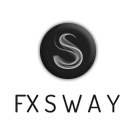 FxSway (2021)
Leverage: up to 1:500
Deposit: from 10 USD
Spreads:
FxSway (2021)
Leverage: up to 1:500
Deposit: from 10 USD
Spreads: 

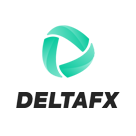 DeltaFX (2009)
Leverage: up to 1:1000
Deposit: from 1 USD
Spreads:
DeltaFX (2009)
Leverage: up to 1:1000
Deposit: from 1 USD
Spreads: 



 PrimeBit (2019)
Leverage: up to 1:200
Deposit: from 0.0001 BTC
Spreads:
PrimeBit (2019)
Leverage: up to 1:200
Deposit: from 0.0001 BTC
Spreads: 






 Sway Markets (2022)
Leverage: up to 1:500
Deposit: from 20 USD
Spreads:
Sway Markets (2022)
Leverage: up to 1:500
Deposit: from 20 USD
Spreads: 




 Forex.com (2001)
Leverage: up to 1:50 *
Deposit: from 100 USD
Spreads:
Forex.com (2001)
Leverage: up to 1:50 *
Deposit: from 100 USD
Spreads: 

 ATC Brokers (2005)
Leverage: up to 1:200 *
Deposit: from 2000 USD
Spreads:
ATC Brokers (2005)
Leverage: up to 1:200 *
Deposit: from 2000 USD
Spreads: 



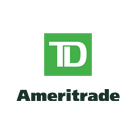 TD Ameritrade (1975)
Leverage: up to 1:50 *
Deposit: from 20 USD
Spreads:
TD Ameritrade (1975)
Leverage: up to 1:50 *
Deposit: from 20 USD
Spreads: 
 Interactive Brokers (1978)
Leverage: up to 1:50 *
Deposit: from 20 USD
Spreads:
Interactive Brokers (1978)
Leverage: up to 1:50 *
Deposit: from 20 USD
Spreads: 
 Oanda (2001)
Leverage: up to 1:50 *
Deposit: from 20 USD
Spreads:
Oanda (2001)
Leverage: up to 1:50 *
Deposit: from 20 USD
Spreads: 




 Nadex (2009)
Leverage: up to ---
Deposit: from 250 USD
Spreads:
Nadex (2009)
Leverage: up to ---
Deposit: from 250 USD
Spreads: 

 Pocket Option (2017)
Leverage: up to ---
Deposit: from 10 USD
Spreads:
Pocket Option (2017)
Leverage: up to ---
Deposit: from 10 USD
Spreads: 













 GC Option (2006)
Leverage: up to ---
Deposit: from 10 USD
Spreads:
GC Option (2006)
Leverage: up to ---
Deposit: from 10 USD
Spreads: 












 CloseOption (2015)
Leverage: up to ---
Deposit: from 1 USD
Spreads:
CloseOption (2015)
Leverage: up to ---
Deposit: from 1 USD
Spreads: 










 Quotex (2019)
Leverage: up to ---
Deposit: from 10 USD
Spreads:
Quotex (2019)
Leverage: up to ---
Deposit: from 10 USD
Spreads: 







 OptionBlitz (2021)
Leverage: up to ---
Deposit: from 10 USD
Spreads:
OptionBlitz (2021)
Leverage: up to ---
Deposit: from 10 USD
Spreads: 

 Binany (2018)
Leverage: up to ---
Deposit: from 10 USD
Spreads:
Binany (2018)
Leverage: up to ---
Deposit: from 10 USD
Spreads: 



 Cronika (2025)
Leverage: up to ---
Deposit: from 10 USD
Spreads:
Cronika (2025)
Leverage: up to ---
Deposit: from 10 USD
Spreads: 






 Coinexx (2017)
Leverage: up to 1:500
Deposit: from 0.0001 BTC
Spreads:
Coinexx (2017)
Leverage: up to 1:500
Deposit: from 0.0001 BTC
Spreads: 





 Turnkey Forex (2016)
Leverage: up to 1:400
Deposit: from 5 USD
Spreads:
Turnkey Forex (2016)
Leverage: up to 1:400
Deposit: from 5 USD
Spreads: 




 HugoFX (2017)
Leverage: up to 1:500
Deposit: from 10 USD
Spreads:
HugoFX (2017)
Leverage: up to 1:500
Deposit: from 10 USD
Spreads: 


 CryptoBo (2018)
Leverage: up to ---
Deposit: from 0.0001 BTC
Spreads:
CryptoBo (2018)
Leverage: up to ---
Deposit: from 0.0001 BTC
Spreads: 
Over the last decades, the forex market in the US has emerged as one of the most regulated markets anywhere in the world. Rules that were introduced and backed up by Federal laws have made it very difficult for brokers and traders alike to operate in the US forex market. For many years, only three brokers operated in the US forex market: Oanda, GAIN Capital LLC (Forex.com) and TD Ameritrade. Others were either put out of business or were forced to close down as a result of the strangulating environment created by the regulators, backed up by the Dodd-Frank Wall Street Reform and Consumer Protection Act of 2010.
After the global financial crisis of 2008 which had its origins in the US subprime mortgage market, there were general calls for better regulation of the various markets operating in the United States. The Dodd-Frank Act was a direct consequence of this agitation. This law strengthened the Commodities and Futures Trading Commission, enabling it to oversee not just the conventional financial markets, but also the swaps market which was valued in trillions of dollars.
Changes to the way business was conducted in the US financial markets were sweeping and aggressive. Some of the changes which were directly targeted at the retail segment of the market were as follows:
According to the CFTC, these rules were meant to protect the retail clients from overexposing their money to the market and from taking excessive risk. But to what extent these rules have actually protected the retail consumers of forex products in the US is anyone's wildest guess.
What the regulators of the US financial markets will not readily reveal, is that many traders in the US simply exited the US market and migrated their accounts to brokerage platforms in other countries. Forex brokers located in the US have had whatever market share they had badly eroded, and brokers without the kind of purposeful structure that the former US brokers suddenly emerged as less desirable but ready alternatives to traders who were unwilling to trade under the new conditions in the US.
In other words, the Dodd-Frank Act actually stifled the forex brokerage business in America and the statistics do not lie. During the good times, more than 40 retail FX brokers were serving both US and international clients. Ever since Dodd-Frank became law, that number dwindled to the three brokers mentioned above, and the international clientele base simply moved away from the US and on to brokerages in the UK, Europe, Australia and the Caribbean. A lot of the damage in the US forex brokerage business environment came as a result of the $20million bond which was imposed as a requirement for starting a forex brokerage business in the US. Tax reporting requirements have also scared off many brokerages from accepting US clients. Clearly, no foreign forex company wants to get the same kind of attention that Huawei got from the US government in 2019, or what TikTok got in 2020.
In 2019, some brokers made moves to re-enter the US market. Unfortunately, the COVID-19 pandemic slowed down the process dramatically. Still, some new brokers managed to enter the US forex market in recent years, so traders now have more choice than before.
So what is the current state of the US market as it concerns US Forex traders?
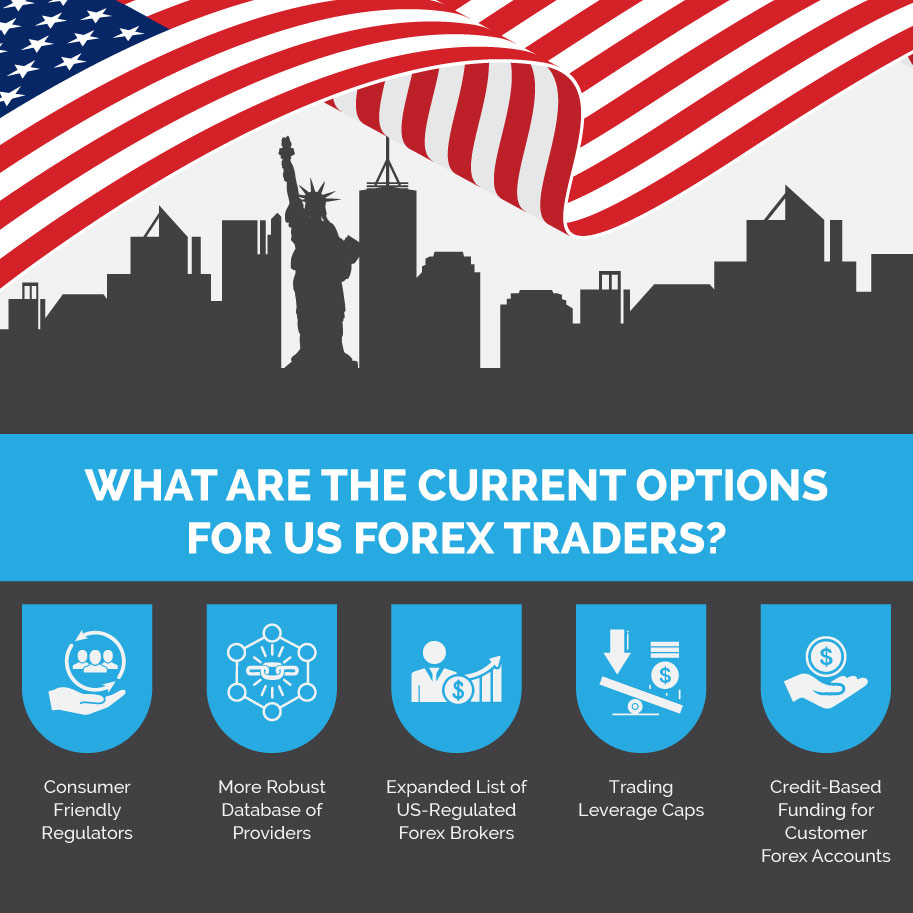
Regulators in the US have made a series of changes designed to improve trading outcomes for US forex traders. For instance, the Commodities and Futures Trading Commission (CFTC) has made its weekly CFTC Positioning Report (also known as the Commitment of Traders Report, or COT) more readily available. This report shows what the major players in the commodities and currency markets are doing. Using this information, summaries of which are found on some MT4 platforms of US forex brokers, traders can consider their positions against the backdrop of the institutional speculators are trading. This provides for more informed trade decisions.
Additionally, the CFTC is now more reachable as a number of channels are now open so the public can make complaints or submit inquiries and observations.
Everyone working in the industry must be registered with the CFTC and NFA. The NFA has taken it a step further by requiring biometric registration of those who provide services to traders, be it brokerage services or fund management. This biometric information can be shared with the Federal Bureau of Investigation (FBI), and this has been a strong deterrence against wrongdoing by brokers. When last did you hear of US forex brokers swindling customers of their funds?
The CFTC database of providers is very vast. All floor traders/brokers, introducing brokers, swap dealers, retail forex dealers, commodities pool operators (CPOs) and commodities trading advisors (CTAs) who are licensed to provide services to US forex traders are all on this database.
If you are approached by anyone claiming to be any of these, you can easily contact the CFTC for near-instant verification. Even those who are not listed on the CFTC database by reason of exemption must appear on the NFA database, and the reason for the CFTC exemption provided.
There used to be a time when more than 70 brokers operated in the US forex market. The Dodd-Frank Act thinned them out to just 3, and it remained this way for a nearly a decade. At the present day, there are now 8 regulated forex brokers in the US. Oanda, Forex.com (GAIN Capital) and TD Ameritrade retained their positions, and are now joined by ATC Brokers, IG US, Interactive Brokers, Ally Invest and ThinkorSwim (now owned by TD Ameritrade).
The 2018 ESMA Rules in Europe forced all local brokers to set a 1:30 leverage limit for all major FX currency pairs. In the US, this cap remains at the 1:50 level introduced in 2010. US forex traders will continue to enjoy what now seems to be the most liberal leverage caps in the Tier 1 regulatory jurisdictions.
Bank drafts and direct debits from a bank-linked ATM card are now the recognized means of account funding for US forex traders. The use of credit cards is now prohibited.
These are some of the changes that US forex traders have faced in 2020. 2020 also marked the year of the COVID-19 global pandemic that has completely changed the face of the global economy. However, while many other economic sectors have been badly hit, forex trading and other forms of financial market activity have thrived. In fact, the massive job losses and furloughs across the world that left millions without a source of income, drove the same people to the financial markets. Many brokerages have witnessed a surge in new trading account registrations as well as inquiries about trading. COVID-19 has changed the face of financial trading and it is likely that a number of changes as to how forex is traded in the US are coming.
What changes can US forex traders hope to see in 2025 and beyond?
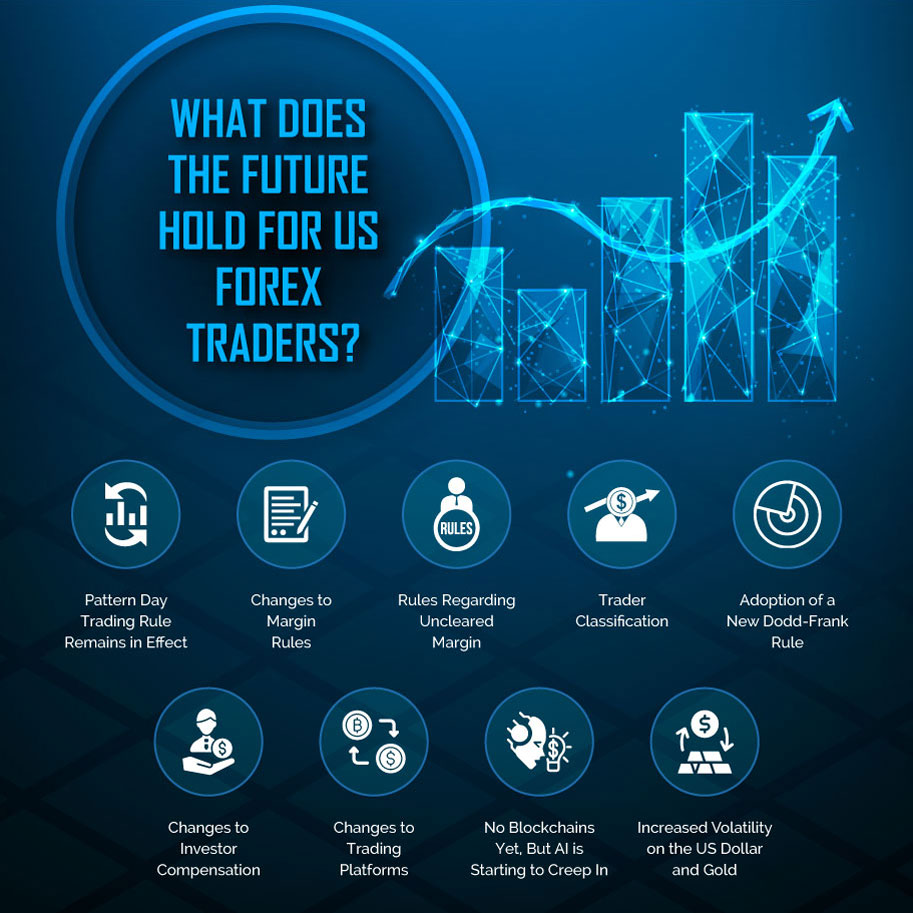
The Pattern Day Trading Rule (PDT) still exists. This rule states that all US day traders must maintain a minimum account balance of $25,000 on any trading account that operates on margin. Forex trading is leveraged, and retail forex traders are typically given a leverage of 50:1 when trading forex majors, or 20:1 for trading forex minors/exotic currencies.
The pattern day trading rule came into effect in 2001 as a measure from US financial market regulators to protect traders classified as "unsophisticated" investors from making risky trades in the market. This rule applies to traders who perform four or more forex trades in a period of five business days. The rule is simple: if you want to day trade, do it with a minimum of $25,000 and not from a small account.
So, what if you do not have $25,000 as may be the case with many of you? You can create scenarios that can make you exempt from this rule.
In 2020, new margin rules for US forex brokers were proposed. These changes followed the intense volatility that hit the forex and equity markets following the outbreak of the COVID-19 pandemic. This period saw an unprecedented rush into the forex trading world by desperate individuals who were forced to look for alternative income when several industries went comatose at the height of the pandemic. Many of these people were first-time traders with very little or no experience in the market. The regulators felt that these changes were necessary to protect these new investors from the heightened market risks. These risks, though largely dissipated, still exist as central banks start to unwind from the pandemic stimulus programs that produced record inflation.
The proposed changes to margin requirements meant that broker-dealers would have to request their clients to maintain higher levels of account capital when trading volatile instruments such as leveraged securities, currencies and derivatives assets. Hitherto, major forex pairs attracted a leverage of 50:1 (2% margin requirement), while minor forex pairs, exotic pairs and other volatile assets would come with a 20:1 leverage or a 5% margin requirement.
A look at some of the trading portals of the US forex brokers shows that they have indeed implemented the proposed margin changes of 2020 to a large extent, if not fully. Some brokers have gone to the extent of individualizing the margin requirements for each specific asset. This move implies that you will find different assets with different margin requirements, even among similar assets, such as exotic forex pairs.
2022 paved the way for the transition into the final phase of the Uncleared Margin Rules (UMR). These rules involve how buy-side participants in the forex market handle the initial margin and variation margin among all counterparties in the market. Compliance with the UMR 6 demands a consolidated margin threshold of 50 million units of either the EUR or the USD that must be adhered to, among other requirements.
The implementation of the uncleared margin rules has been in stages, with UMR 1 commencing in 2017. These rules were initially conceived in the aftermath of the 2008-2009 global financial crisis to enable firms to handle risk better. So where is the standing of US forex brokers with these new uncleared margin rules?
These rules mean US forex traders can now access more expansive OTC liquidity pools. New futures and options contracts on FX pairs are coming on board, and US forex traders may have broader access to FX-based assets. Already, the Chicago Mercantile Exchange (CME) has introduced FX futures contracts on the Euro on a short-term rate basis.
A fallout of the Dodd-Frank Act of 2010 is that US forex brokers must now classify their traders based on trading experience, professional qualifications/experience, and amount of capital traded/notional trading volumes. This classification now separates US forex traders into "sophisticated" and "unsophisticated" investors. What is the implication of this classification?
One implication is that those traders classified as unsophisticated investors will be subject to the new margin rules described above. However, they will receive extra protections such as negative balance protection and have access to disclaimer details stipulating the risks involved in trading and the percentage success rate on each broker's platform. Sophisticated investors do not have these protections as they are deemed already knowledgeable enough about the risks associated with trading forex and CFDs. They also benefit from being given more generous leverage provisions.
Criteria to be fulfilled to match the classification of a sophisticated investor include the following:
You now have a chance as a US forex trader to choose your classification and enjoy the benefits of being in your chosen category.
A new rule that took effect in November 2023 is the Dodd-Frank rule against trader conflicts. This rule was adopted by the US Securities and Exchange Commission (SEC), and it bars broker-dealers who deal in asset-backed securities from betting against any such assets they have sold to investors.
In other words, brokers and dealers who work on dealing desks or sell-side desks of investment banks can no longer short any asset they have marketed and sold to their clients as assets with growth potential. This practice was rampant in the lead-up to the 2008 global financial crisis and caused many retail traders to lose huge sums of money. This means that if you trade stock CFDs, for instance, and you have long positions on them, you can now be sure that there will be no price manipulation caused by actions such as a massive dump of such stocks by investment banks or dealing desks.
As a US forex trader who trades with US forex brokers, you are entitled to investor compensation if the company you are operating with goes bankrupt. Investor compensation is not provided for losses associated with your trading decisions and activities. If you are trading with an offshore brokerage, you may or may not have access to investor compensation, depending on where your account is domiciled. Many of the brokers listed on this website are members of one investor compensation fund or the other. Find out if the broker of your choice offers this feature.
If you are trading with a US-based forex broker, there is the Securities Investor Protection Corporation (SIPC). This fund provides compensation cover up to a maximum of $500,000, with a cash limit of $250,000. SIPC's protection covers funds in a brokerage account held with a firm under liquidation. It does not cover the decline or loss of value of your assets and certainly does not cover losses incurred due to trading, bad investments, or bad investment advice. Ensure that your US forex broker is a member of the SIPC if you are interested in this protection.
If you are trading with an offshore broker, ensure that they are members of the Financial Commission ($20,000 protection cap) if located in Caribbean islands. Other notable jurisdictions and their investor compensation schemes are:
US forex brokers once were on the verge of delisting the MT4 and MT5 platforms (made by Russian company Metaquotes) as a result of Apple's ban of these trading software from its App store. The impasse has been resolved, and US forex traders have recovered access to these trading software. However, the MT5 is expected to become the more dominant of the two trading software going forward.
A 2021 prediction that blockchain-based trading platforms might hit the US forex markets by 2023 has not come to fruition. However, the use of artificial intelligence (AI) tools has slowly but surely begun to gain mainstream attention among US forex traders. One of the tools that will become more visible in the immediate future is the Capitalise.ai tool. This tool is a strategy builder which allows any trader to use text to instruct the tool to build a trading strategy and automate it. Some brokers for US forex traders have adopted this tool, which also has mobile versions that can integrate seamlessly with mobile trading apps.
Along with these AI tools, there is also expected to be a growth in the algorithmic trading industry. A previous estimate saw sales in this industry hitting an estimated $18.8 billion by the end of 2023, representing a Compound Annual Growth Rate of 11.1% in the period under consideration (2019-2023). Most of this growth was estimated by a MarketsandMarkets 2019 study to emanate from North America.
These estimates have since been revised upwards. CAGR for the industry between 2021 and 2030 is now set at 13.6%, reaching $31.30 billion by the end of the decade. A lot of this growth is expected to come from AI tools, machine learning, big data and an increase in the market share of cloud-based solutions. North America continues the domination of this sphere, but the Asia-Pacific region is starting to make inroads as well.
These tools and resources are expected to become more accessible to the retail end of the forex trading space. US forex traders can see new products from some of the major players in this space, such as Virtu Financial, Thomson Reuters, Kuberre Systems, and Argo SE.
As central banks across the world start to unwind the tight monetary policy regimens instituted to combat the inflation that followed the inflow of stimulus cash into the global economy, there will be increased volatility in the US Dollar and on gold. For the upcoming years, it will be all about the commencement, speed and extent of interest rate cuts. Traders who trade USD pairs and gold will have plenty of market opportunities heading into the next two years.
One of the best things that consumers of any product can enjoy is the power to choose, and to be able to make that choice from a wide range of service providers. This is what the Dodd-Frank law has taken away from US forex traders… but things have changed. Aside from a few forex brokerages operating in the US, there are a number of offshore forex brokers expressing willingness to take US traders on their platforms.
There are a number of advantages and also drawbacks to this arrangement. In terms of benefits, this is what US forex traders will enjoy when they use the offshore brokers presented in the list above.
The brokers featured in the list above have been carefully selected to offer you a forex brokerage service that rivals what you can get anywhere in the world, and under non-restrictive conditions. They are great for beginners who can make a transition from a demo account to a lightly funded live account, just to ensure they can understand what live trading is all about before they get more heavily committed. ECN style accounts are also available for those who prefer to trade directly with the FX interbank market. There is a lot of choice for you as you go through this list of brokers, one after the other.